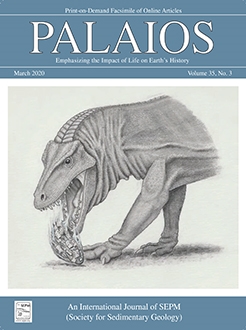Regurgitalites (fossilized regurgitates) can provide insight into the behavioral ecology and physiology of extinct species but they are rarely reported because they are difficult to identify and distinguish from coprolites. A compact mass of skeletal material from the Owl Rock Member of the Upper Triassic Chinle Formation of Arizona reveals features that identify it as a regurgitalite. Characteristics of the teeth and osteoderms in the specimen indicate that these remains belong to the pseudosuchian archosaur Revueltosaurus. Chemical and microstructural analysis revealed a dearth of gastric etching, the preservation of muscle fibers, and the absence of a phosphatic matrix, indicating that this bone mass is a regurgitalite and not a coprolite. It was probably produced by a phytosaur, rauisuchid, or temnospondyl, all of which occur in the Owl Rock Member. We offer an identification key to assist in distinguishing between different types of digestive remains produced by vertebrate carnivores.
How to translate text using browser tools
11 March 2020
DISTINGUISHING REGURGITALITES AND COPROLITES: A CASE STUDY USING A TRIASSIC BROMALITE WITH SOFT TISSUE OF THE PSEUDOSUCHIAN ARCHOSAUR REVUELTOSAURUS
Caleb M. Gordon,
Brian T. Roach,
William G. Parker,
Derek E. G. Briggs
ACCESS THE FULL ARTICLE
It is not available for individual sale.
This article is only available to subscribers.
It is not available for individual sale.
It is not available for individual sale.

PALAIOS
Vol. 35 • No. 3
March 2020
Vol. 35 • No. 3
March 2020




